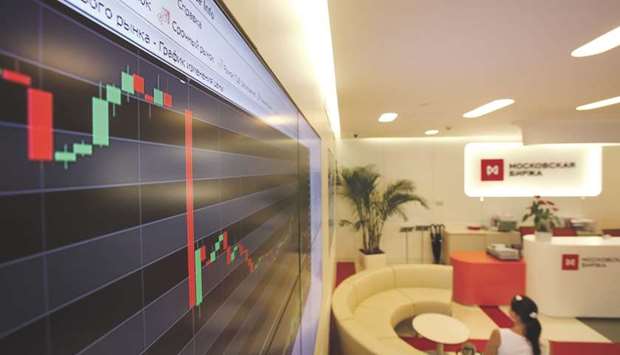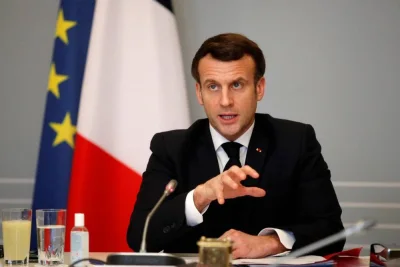Fund managers including RAM Capital and Union Bancaire Privee are eyeing up an earnings yield of as much as 17.8% for Russia’s dollar-denominated RTS stock index, compared with just 3.5% for rouble bonds.
The central bank’s decision to accelerate rate cuts this year as inflation slows is only increasing the appeal of the trade.
Demand from so-called carry traders, who borrow where interest rates are low to invest in high-yielding currencies, is petering out under the central bank’s easing cycle.
If a year ago money managers were keen to invest their payouts from the Russian dividend season in rouble bonds, also known as OFZs, to capture returns from interest rates as high as 11%, 12 months on they’re more likely to plough them back into stocks, according to Swedbank Robur and Union Investment Privatfonds GmbH.
“There is not much juice left in Russian bond yields, so it makes sense to move to equity investments,” said Ogeday Topcular, who helps oversee $300mn as managing partner at RAM Capital in Geneva. “It seems like Russia is coming out of recession and the growth expectations are there.”
Russia’s benchmark Micex Index is having a rough year, dropping 16% as oil falls and the realisation grows that the US won’t ease sanctions. That provides a chance to invest while valuations are still low, money managers say. Dividends on Russian stocks are offering the most attractive yields, at 5.9%, relative to their emerging-market peers since 2008. Russian stocks also have the lowest valuation among developing countries, trading at a ratio of 5.6 times estimated earnings.
“The upside in equities looks higher to me than in fixed income, based on attractive valuations and dividend yields, but it is a riskier asset class,” said Pavel Laberko, a London-based money manager at Union Bancaire Privee. “The overall equity valuation is also attractive after Russia weakened this year.”
Sberbank CIB analysts believe Russia’s alluring dividends, currently offering the highest yield in the world, are sustainable, unless the oil price collapses, they said in an e-mailed note on Thursday.
Waning appetite for Russian local bonds was visible at the May government auctions, where the Finance Ministry failed to sell the full amount on offer at five out of eight sales. Only one April auction fell short of a sellout. The government this week reduced the bond auction amount to 35bn roubles ($617mn), the smallest offering since March 1.
Foreign investors bought a record 288bn roubles of the securities in the first quarter. In April, non-residents added just 15bn roubles, according to Societe Generale.
Rouble bonds were the best performers after Brazil in emerging markets last year, with a dollar return of 36% as the central bank held back on monetary easing, cutting the key rate by just 100 basis points to 10%.
This year, encouraged by a stronger rouble and slowing inflation, the regulator has reduced borrowing costs to 9.25% and signalled further rate cuts. Central Bank Governor Elvira Nabiullina told reporters Monday that the central bank will consider a cut of 25 or 50 basis points at the next rates meeting on June 16.
Yields on the OFZ bonds have dropped to 7.8% from 9.1% a year ago. The rouble strengthened 0.2% on Thursday, after weakening the most in a month on Wednesday as oil declined following an unexpected rise in US crude stockpiles. Five-year bond yields were steady at 7.84%.
“Bonds are indeed not offering much value right now,” said Ekaterina Iliouchenko, who oversees about €200mn ($225mn) in eastern European assets at Union Investment in Frankfurt. “We’ll reinvest dividends from Russian stocks into the equity market.”
To succeed in Russian stock investments, it’s best to select individual stocks, as opposed to the whole index, which is prone to commodity and geopolitical volatility, according to Swedbank Robur’s Elena Loven. While Aeroflot PJSC has risen 34% in dollar terms this year, followed by Yandex NV’s 33% gain and X5 Retail Group’s 14% advance, Loven recommends focusing on laggards, such as telecoms and food retailer Magnit, which is down 18% in 2017.
“When rates come down, this is positive for equities as cheaper capital becomes available,” said Loven, who helps manage more than €1bn in Russian stocks in Stockholm. “Investors will put their dividends back into Russian stocks because OFZ bond yields aren’t so attractive anymore.”



